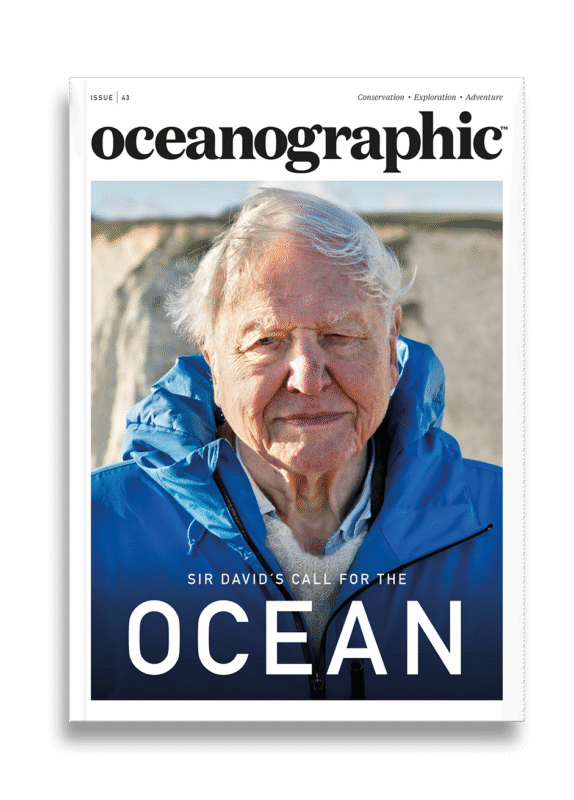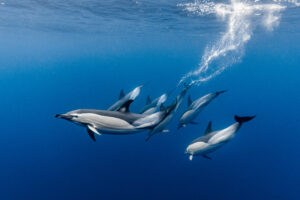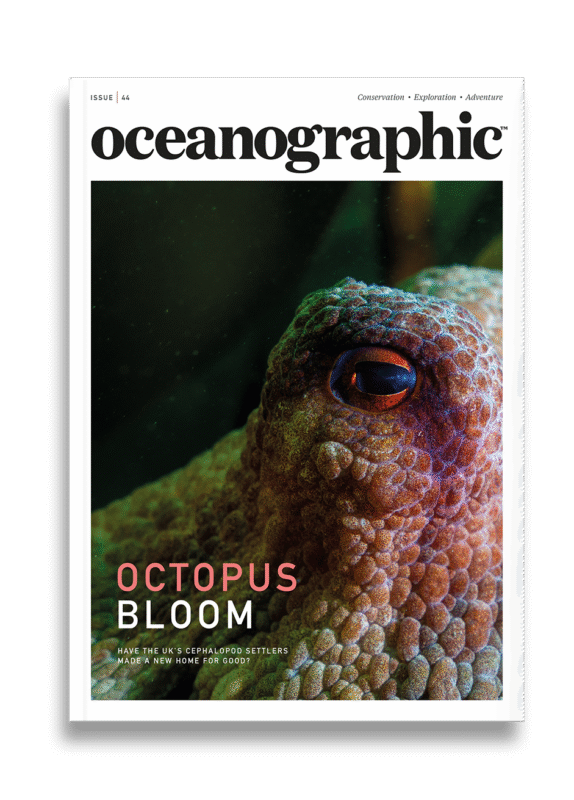Salim’s Zanzibar
Coming to Zanzibar for the first time as part of the Edges of Earth expedition was one of the stops we’d been looking forward to most. We carried a vision in our minds of what this raw and wild would be like – in our minds, a place where nature ruled, and life moved at a slower pace. But upon arrival, it became clear that heavy tourism had already made its mark.
Zanzibar was buzzing with holiday travellers, luxury resorts, and beachside crowds, particularly as we arrived at the start of high season. While we embraced the culture of the boisterous and energetic Stone Town, we found ourselves yearning for a glimpse of the grittier side of Zanzibar – the part that still felt untouched. To find it, we knew we had to leave Zanzibar’s main island, Unguja, and head somewhere more remote.
Chumbe Island Coral Park (CHICOP) was our final destination, as it was on the map as one of the most forward thinking and pioneering conservation success stories out there. Established in the early 1990s, it is the world’s first privately managed marine protected area (M-PPA) and remains an extraordinary model of eco-tourism and sustainability. Recognised globally, the park has received numerous accolades, including being classified as a Category II Park under the International Union for Conservation of Nature (IUCN) and earning Blue Park status for its superb management and biodiversity. Its reef sanctuary and forest reserve are no-take zones, allowing its ecosystems to thrive undisturbed for over three decades.
While on the island, we immersed ourselves in the rhythms of its conservation efforts and got to know the people driving its success. One of them was Salim Abdalla Salim, a Zanzibari local who shared his story of growing up on these islands and witnessing the changes brought forth by tourism and time. As Chumbe’s Conservation & Education Coordinator, Salim gave us an inside look at the work being done to protect this unique ecosystem. Together, we went freediving around the pristine reef system, joined local school children for an educational snorkelling session, and learned how Chumbe’s vision for sustainability offers hope for the future.
He told us: “Growing up in Zanzibar, a place immersed in vibrant culture, spices and natural beauty, has been incredible. There’s no other way to describe it! While I was born in Pemba, my parents moved to Unguja after marrying, and it’s been home ever since. Life here is shaped by a strong community spirit and the kindness of the people, making it a special place I’m fortunate to call home. Like most kids, I had a bit of a rebellious streak. My parents didn’t allow me to go to the beach when I was young. They worried about the ocean, like many parents in Zanzibar at the time, making their concern hardly unique. There were stories – kids drowning, dangers lurking in the sea – and they wanted to keep my siblings and me safe. Only a few parents would teach their kids to swim themselves, and for most, the ocean was off-limits. But the ocean had a pull I couldn’t resist.
“Without their permission, I would sneak off with my friends to the beach. We taught ourselves to swim, figuring the ocean out together. By the time my parents discovered what I’d been doing and tried to stop me, it was too late. I was already a strong swimmer and rather hooked. These days, things have changed. With the influence of social media and more exposure to activities like swimming, snorkelling, and diving, more families are embracing the ocean. It’s no longer as strange as it once was, and I’m happy to see the shift.”


“After completing my advanced-level studies in Zanzibar, where I focused on Geography, English, and History, I pursued a Bachelor’s degree in Geography and Environmental Studies in Dar es Salaam from 2017 to 2020. After returning to Zanzibar, finding a professional job in my field was challenging. To make ends meet, I took on jobs outside my career path while volunteering as a part-time teacher at the school where I’d studied. That’s until I found CHIOP back in March 2022.
“Today, I oversee educational programs, conservation activities, and research coordination. Working closely with our head ranger and his team, I ensure that monitoring, data collection, and analysis are conducted efficiently, and reports are prepared to guide our efforts. When researchers visit, it’s my responsibility to align their work with the island’s conservation priorities, ensuring that everything is done sustainably and ethically.
“Probably my favourite of CHICOP’s conservation success stories is the return of blacktip reef sharks. These predators weren’t present when the Coral Park began in 1992, but over the past 15 years, their numbers have steadily increased. Their presence is a powerful indicator of the reef’s health – there’s enough food, biodiversity, and balance in the ecosystem to support them. Not to mention, comparing today’s population of reef sharks to just five years ago shows how much progress has been made. Progress that I’m extremely grateful to be a part of. Why was this possible? The western side of the island, spanning 55 hectares, is a strict no-take zone. Fishing, anchoring, and even close passing are prohibited to protect the coral and marine life. This has made Chumbe’s reef one of the healthiest in the region.
“While these types of successes are amazing, what motivates me most is hearing fishermen from nearby communities recognise the impact of our work. They see the difference between Chumbe’s reef and other areas that don’t benefit from our protection. They recognise Chumbe as a nursery, where fish breed and then migrate to surrounding waters, boosting their catches. The pulse of conservation is real and felt well beyond CHICOP, which is heartening to know that our work benefits both the environment and the people who depend on it.
“Poaching incidents, which were common in the early days of CHICOP, have significantly decreased. Years ago, boats would frequently enter the protected zone, unaware of its significance. Today, through community outreach and education, those incidents are rare. It’s not unusual to go weeks, even months, without seeing a single fishing boat in the sanctuary. This transformation is proof that what we do is working.”




“One of the most rewarding aspects of my work is running Chumbe’s educational programs. Here, a typical day for students depends on the tides. We start with a snorkelling session where students get to see the reef for the first time. This is fun because typically they are so nervous at the start. But within only a few minutes they grow to love it, and it’s amazing to be part of this eye-opening journey. We also take them on tours of the eco-bungalows to discuss sustainable practices, walk through the forest reserve, and host sessions in our small classroom, where the students are taught about coral reefs, forest ecology, and the importance of environmental conservation. By the time they leave in the evening, the students have not only learned, but also experienced the connection between healthy ecosystems and sustainable living.
“Despite the joys of teaching, there are challenges. Many of these students, even those who have grown up near the coast, don’t know how to swim. While this fact isn’t surprising, given what my own journey was like growing up here, times have changed. Yet, it’s still something we are seeing over and over. And it’s also our role to fix that. Another common misconception we encounter is about corals. Many think they’re stones or plants. Explaining that corals are living animals that need care and protection is often the first step in reshaping how they see the marine environment.
“Unfortunately, we can only accommodate a limited number of students each day. Most schools in the area have over 40 students per class, but our programs are capped at 15 students to ensure a focused, hands-on experience. Demand far outweighs our capacity, and we regularly receive requests from schools eager to bring their students to Chumbe. These limitations aside, the impact of these programs is powerful. Watching student’s faces light up as they learn and explore makes any effort worthwhile. By helping them form a connection to the ocean, we believe we are inspiring the next generation of ocean stewards.”




“One thing I’ve learned from working on Chumbe is how much difference effective management can make. If you talk to people who’ve been here since the beginning – like our head ranger, who started in 1992 – they’ll tell you that back then, most of the reefs around Zanzibar looked very similar. They were healthy ecosystems, with only minor signs of degradation in some areas. But today, the contrast between Chumbe and reefs in free-fishing zones is striking.
“On Chumbe, with our three decade old no-take zone, biodiversity is alive and well. Fish species and coral cover are abundant, and the reef is a showcase of what effective conservation can achieve. In contrast, reefs outside protected areas have suffered significant damage from unchecked human activities, overfishing, and environmental degradation. The efforts we’ve put in since the beginning – patrolling, enforcing regulations, and maintaining the sanctuary – have preserved Chumbe’s reef, while many others now face decades of restoration work to even begin to recover.
“Climate change adds another layer of challenge for us all. It’s a global issue with its effects being felt here just like everywhere else. On Chumbe, we rely on rainwater to sustain our operations, but rainfall patterns have shifted dramatically. When I was a child, we could predict three months of steady rain during the core season. Now, we might get only a few weeks of sporadic rain. This has made water management a constant challenge for the island, affecting pretty much everything.
“In Zanzibar, I’ve seen the coastline change drastically over the years. When I was younger, the mangrove forests and beaches near my home were thriving. Today, much of that coastline has eroded, and seawater encroaches further inland, threatening structures and ecosystems. It’s a visible scar that is a constant reminder that these issues are not abstract – they’re happening and they are very real.”


“Then there’s tourism. It’s grown significantly over the years in Zanzibar, especially in areas like Shamba in the north and east of the island. At one point, there were only a few hotels in the area, but now there are many, with increasing numbers of visitors arriving each year. While tourism brings economic opportunities, it also creates heavy-hitting challenges. For example, fish that were once a staple for local communities have become harder to find and more expensive due to high demand from tourism. This increased pressure on resources has led to unsustainable fishing practices which negatively impacts the marine environment at large.
“Our belief here is that tourism can and should be done differently – more effectively. We’ve created a model of eco-tourism that limits the number of visitors to reduce environmental impact and preserve our precious resources like water. Here, revenue from tourism directly funds conservation, education programs, and community support initiatives. This approach ensures that tourism benefits not just the environment, but also the local communities who are impacted by people coming to their home lands.
“Chumbe is a unique place, not just in Zanzibar but globally, demonstrating how tourism can be a force for good when managed sustainably. I strongly believe that change begins with small, actionable steps. If more destinations adopted practices like ours – focusing on what they can do instead of waiting for someone else to act – the impact we’d see around the world would be significant.
“So, to anyone considering a visit to Chumbe, know that this is a place where you can experience nature in its purest form. All while knowing that your presence contributes to something much bigger – a greater purpose. While it’s easy to just focus on Chumbe’s beauty, the real takeaway you’ll find is embracing being part of one of marine conservation’s biggest success stories. I welcome you here to see first-hand the positive impacts of conservation, sustainability and community development working all together.”
Printed editions
Current issue
Back issues

Back Issues
Issue 43 Sir David Attenborough’s ‘Ocean’

Back Issues
Issue 41 Holdfast to the canopy
Enjoy so much more from Oceanographic Magazine by becoming a subscriber.
A range of subscription options are available.










